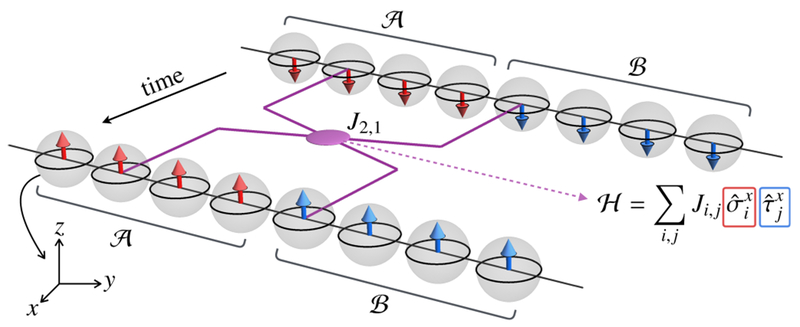FIG. 1.

Schematic of the model. Spins in sublattice (red, ) are coupled to spins in sublattice (blue, ) via Ising couplings and all of them start off in |↓〉. To lowest order in time, the matrix element of the time-evolution operator between an initial state with all spins initialized in |↓〉 and a final state with all qubits in |↑〉 receives contributions in which each spin is flipped precisely once (one such contributing term, between the spin on the second site of and the spin on the first site of , is shown).
